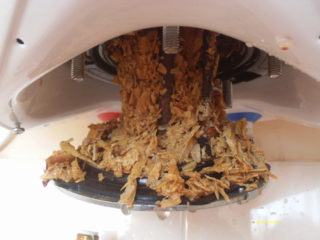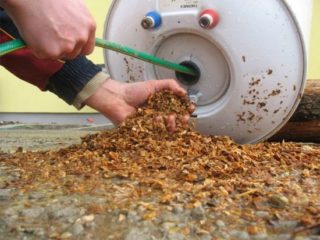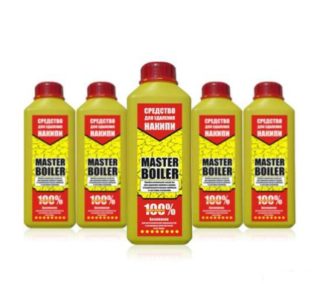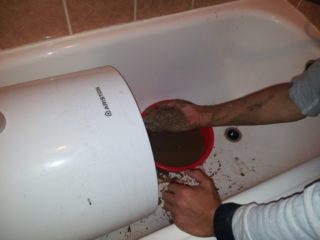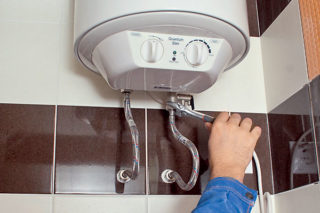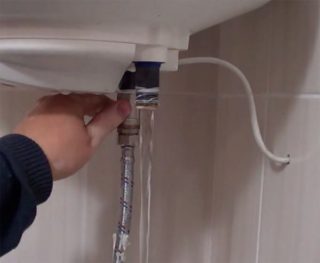Boiler water heater is a convenient device that is used in apartments and private houses. Thanks to the autonomous heater, the supply of hot water does not depend on a centralized heating system. The device serves for many years, if you observe the operating conditions and carry out cleaning on time. You can get rid of scale on the heating element yourself, it is only important to follow the instructions.
Boiler Cleaning Frequency
Special tubes are responsible for heating the water in the boiler. They come in contact with the liquid, as a result of which they can become covered with a layer of calcium deposits and scale. This affects the heat transfer, so it is necessary to clean.
In the first year of operation of the device, it is possible not to do preventive cleaning of heating elements. During the next application, prophylaxis is performed every 1.5-2 years. It is also necessary to clean the pipes if the boiler starts to heat the water poorly. This situation occurs when the scale layer is already too large.
You can perform the procedure yourself or seek the help of specialists. The process is simple if you follow the instructions.
Instructions for draining water from a boiler
Before cleaning the boiler and disassembling the device, it is necessary to drain the remaining liquid that has accumulated in it. This will require the help of another person, since the tank itself is heavy and needs to be maintained during dismantling.
Water Drain Algorithm:
- Switching off the boiler from the power supply. It is enough to pull the plug out of the socket.
- Disconnect the cold water hose from the water supply and immerse it in any container. It can be a bathtub, basin, sink. The hot water pipe can not be turned off.
- The removed hose should be put on the safety valve. The free part is placed in a container.
- Opening the device tap, releasing the check valve fuse.
- Turn on the hot water tap in the kitchen and bathroom. After that, water will flow from the hose.
- After removing the water, blow the cold water hose with air. If there is no characteristic sound of gurgling, you can continue to work.
Next, unscrew the hose that supplies hot water. The boiler must be removed from the installation site and put on the floor up by taps. You can proceed to the next stage of disassembly.
Boiler analysis

When all the water is drained, the heater can be disassembled. The parsing instructions are as follows:
- Twisting the bolts that secure the front cover.
- Gently pull the panel to engage the latches. No need to exert much effort, otherwise the clamps may break. They should come out of the door mount.
- Removing the panel, removing the thermostat holder.
- Removing the protective door. It is necessary to unscrew the screws that hold it, and remove the door itself.
- Next, a diagram will be visible. It needs to be photographed or drawn so as not to confuse the place of the details later.
- Disconnect the electrical wire.
- Removing the ground cable.
- Removal of a sealant and TENA.
- Flange removal.
Now you can start cleaning the heating element.
It is important not to damage the sensitive magnesium anode during the cleaning process so that the heater does not fail.
Cleaning the heater
You can clean the heating element in different ways - folk methods and store powders.
Citric acid acts as a popular folk remedy. When interacting with scale, it becomes loose and is easily removed by water. The boiler is cleaned as follows:
- It is necessary to collect hot water in a bucket.
- Dissolve 200 grams of citric acid and 200 ml of vinegar in a liquid. The resulting mixture must be stirred.
- Place the heater in the bucket with the resulting solution. It should be left there until the water has cooled completely.
- Pull out the heating element, rinse it with running water.
This is a slow and mild descaling method. To speed up the reaction, you can take an enameled container, fill it with a solution based on cold water and put it on a gas together with a heating element immersed in a liquid.
Descaling the boiler using a store-bought product:
- Dilute the required amount of product in water. Proportions are indicated on the package. One bucket usually uses 10 ml or one cap of powder.
- Stir the product, place the heater in it. Usually 2-3 hours are enough for cleaning.
To speed up the process, you can dilute the chemical powder in warm water. In this case, descaling will be easier.
During operation, it is important to prevent contact of the chemistry with the rubber seal. It can be damaged and become unusable, because of which the boiler will leak.
Inside tank cleaning
In addition to the heater, it is necessary to clean the boiler tank. When descaling, the resulting waste must not be washed into the sewer. It is better to throw them in the trash so that the system does not become clogged.
Cleaning the boiler from scale inside:
- Wear personal protective equipment. It is forbidden to work without gloves.
- Substitute a container under the opening so that liquid with scale does not get on the floor.
- Remove large pieces of dirt manually.
- Connect the nozzle with cold water. Turn it on slowly.
As a result, water will remove accumulated dirt. If there is an assistant, you can fill the tank with water and shake it. This must be done carefully, as the boiler is large and heavy.
Reverse assembly
The assembly algorithm can be performed in the reverse order according to the above instructions. You can also do everything according to a photograph of a circuit that was photographed or sketched before cleaning the boiler. The following steps must be completed:
- Put the heater in place. Mount the flange.
- Connect the ground cable and electrical wire.
- Install the security door. Tighten the bolts.
- Install the panel and thermostat holder. The panel is placed until a characteristic click.
- Install the mounting bolts that hold the door.
After that, a control supply of water is made. If it is hot, everything is done correctly.
You need to understand that a number of models have their own assembly features, depending on the manufacturer.
Boiler Ariston
When disassembling it, it is important to pay attention to the shape and method of fixing the flange. It must be pushed onto itself, turned and then pulled out. Since the heater is located below, the boiler can not be removed from the wall.
Burning
In the boilers of this model, at first glance it is difficult to remove the front panel. It is necessary to tighten the bottom edge of the panel and pull it towards you. Since it rests on latches, it will not be difficult to remove the panel. An important feature of such models is a lot of weight, so an assistant will be required.
Termex
A feature of these devices is the rapid breakdown of the magnesium anode. It has to be changed almost once a year. The rest of the build algorithm is no different.
Polaris FD
When disconnecting the taps and thermostat, the heating element is removed. It is necessary to unscrew the fixing bracket and pull out the heater at an angle from the tank. In a straight line, you cannot delete an item. Then you can clean the heating component from rust.
Recommendations for use
It’s easy to work with a boiler.Instructions for use are quite simple, but you must follow the rules of operation. Otherwise, the device will often fail and become clogged.
A number of nuances that must be observed when operating water heaters:
- In the event of a prolonged absence from home, disconnect the appliance from the mains. This applies to all electrical devices. With a constant connection, the boiler will heat water, which will not be spent on anything. The owner of the house will overpay for electricity and reduce the life of the heater.
- Before connecting the device, make sure that the tank is filled with water. Otherwise, the boiler will burn.
- It is imperative to drain all water without residue before cleaning the boiler.
- Filters should be installed to clean and soften the water. They can be installed on the whole house. This will increase the life of the boiler.
- The boiler should not be connected at full power if the system has a small pressure of water. The device may not respond.
- Often you can see advice on setting the economy mode. In this case, the water is heated to 30-50 degrees. This is impractical, since energy is still spent on heating the liquid. In addition, microbes and bacteria develop in warm water, which are harmful to health. Therefore, it is better to set a 90 or 100 degree operation mode so that the tank is disinfected inside.
A water heater is a good helper in home and apartment conditions when disconnecting or not having hot water. Following the requirements of operation and periodic preventive flushing will extend the life of the equipment. Do-it-yourself boiler cleaning is straightforward if you follow the instructions.
